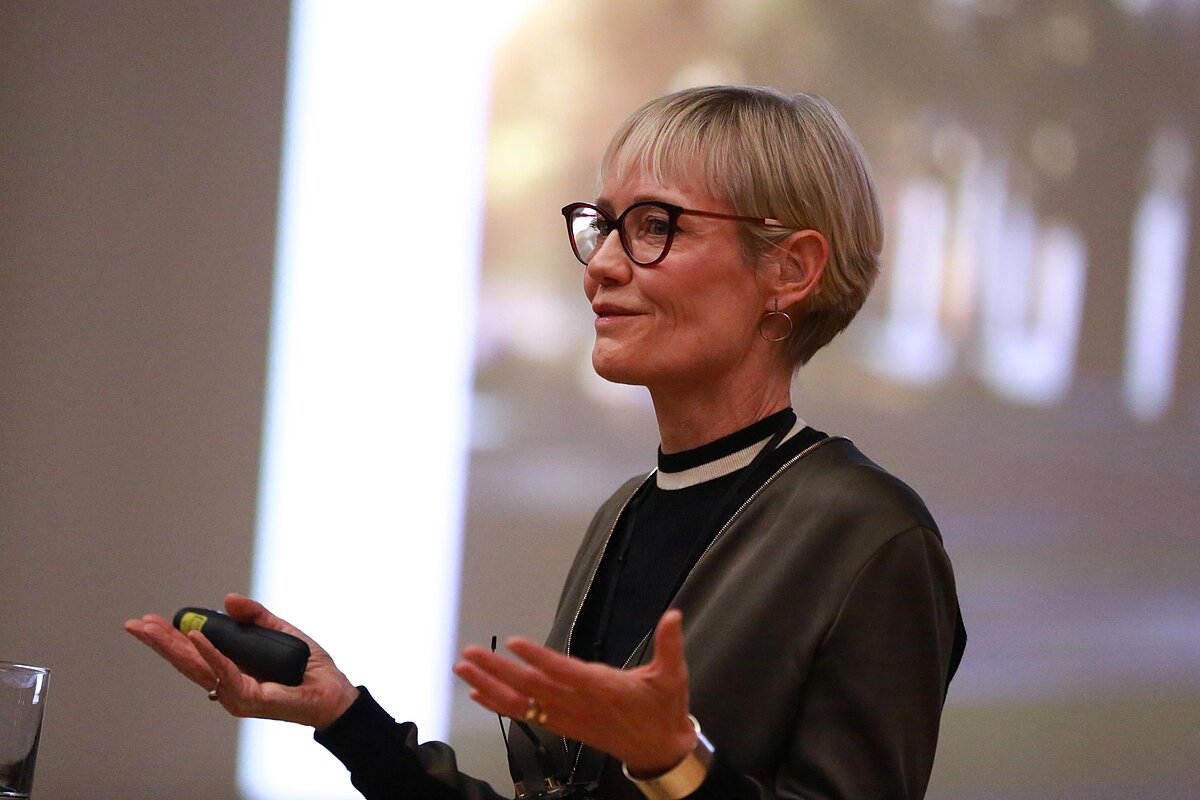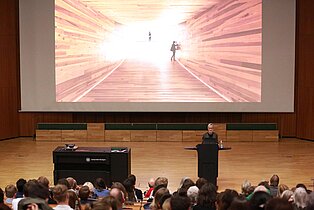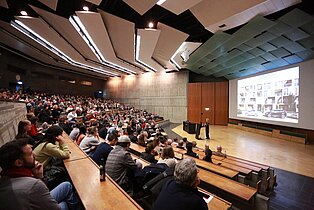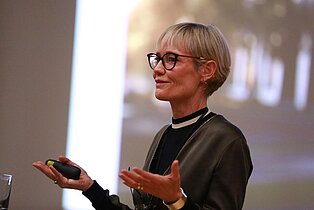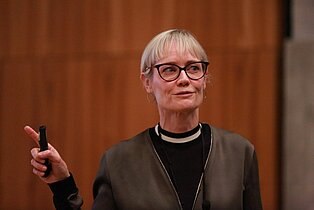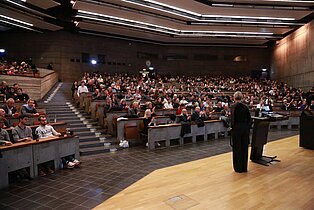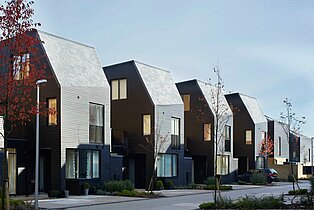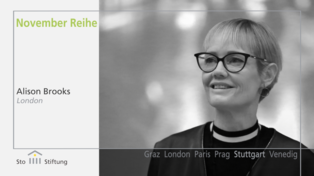Review | Alison Brooks in Stuttgart
This year's November Series in Stuttgart ends with architect Alison Brooks. Born in Canada, she came to London in 1988, where she founded her own office in 1996. Since then she has implemented numerous residential buildings and urban development projects. Commenting on this, she said: "Urban living is the most important form of social architecture, because it influences everyday life and the way people see the world."
Alison Brooks began her lecture entitled "Making it real – Archetypes and Ecosystems" by reading a statement on today's crises in which she commented: "We overuse the word crisis". However, when the loss of truth is concerned, it is all the more important to communicate clearly what we believe and what we do. "Architecture is far from fake and it is a commitment to the real and the authentic," said Alison Brooks. In connection with the climate crisis and sustainability, she added, "Architecture means working for a better future. We have a privileged role that comes with responsibility."
This was followed by a detailed presentation of projects, which Alison Brooks preceded with the following statement: "Archetypal forms are the basis with which we work". The architect mentioned the Somerset House and the London housing development with terraced houses as examples; both building types are vigorous and have often proven their adaptability. For Mrs. Brooks, it is appealing to take up tried and tested proportions, rhythms and archetypes from building history and transfer them to new projects. Visual connections, vistas and terraced floor structures, but also geometry, shape and structure must always interlock to form a unity.
All these aspects come to bear in particular in the numerous projects that restructure unsuccessful post-war buildings and thus upgrade the urban quality of entire residential districts. Alison Brooks calls this task "re-building London's modernist utopias". An example of this is the Ely Court London, where Mrs. Brooks breaks up the rigid urban structure, creates new lines of sight and thus makes the entire quarter not only more attractive but also safer. With regard to residential construction in general, she said quite clearly: "My condition for assuming a construction project is that every residential building must have a ceiling height of at least 2.60 metres and windows must be fitted with French balconies. I also think every house should have a porch in the entrance area."
Other exceptional housing projects that enter into dialogue with the identity of their location and thus with the built environment are the Exeter College Cohen Quad in Oxford and the Urban Tower near King's Cross. The latter takes up the spirit and architectural quality of the station and transfers the arch motif to the new building. With the arch motif, the office has adopted a building element that had long been rejected in contemporary construction, said Mrs. Brooks. The development of a coherent residential complex always starts with the maximum volume from which Alison Brooks' team gradually takes out areas in order to allow light to enter the complex and individual building sections. For the architect and her projects, it is of central importance to "design cultural and ecological systems".
As a final project, Mrs. Brooks presented her contribution at the Biennale 2018 entitled "ReCasting", which made the effect of architecture immediately tangible, and she concluded her lecture with the appeal, "Love your archetypes, create ecosystems and be truthful".
Interview-Video
Alison Brooks talks about the responsibility of architects to protect the environment.


